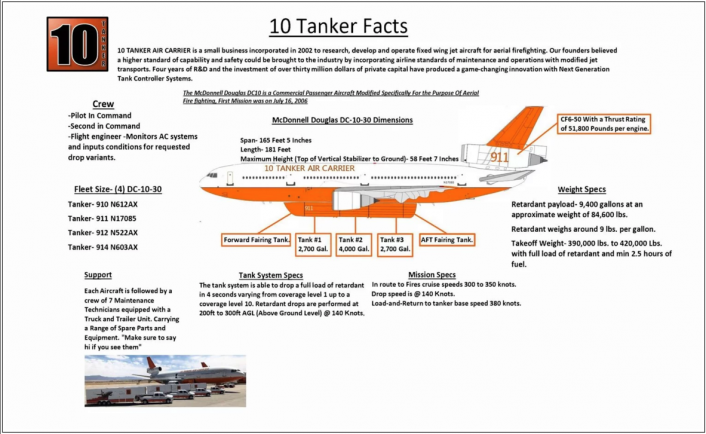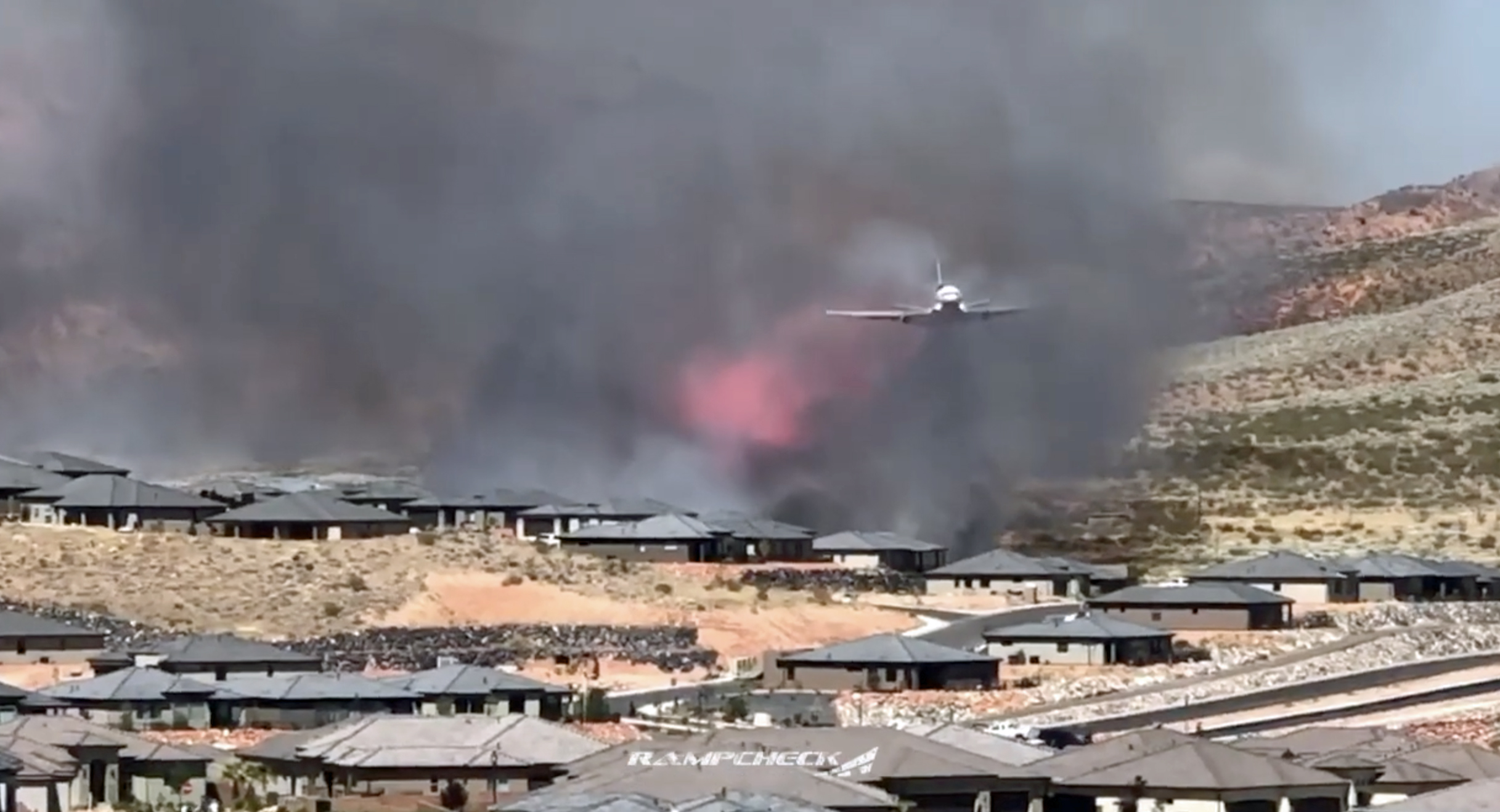10 Tanker’s Converted DC-10 Hits Wildfire Near St. George, Utah, Through Heavy Smoke.
There are plenty of remarkable videos of the air crews from 10 Tanker using their unique, converted DC-10 aerial firefighters to battle wildfires, but this one is maybe a little more remarkable than most.
Our good friends over at RampCheckGlobal on Instagram (give them a follow!) posted this video that was shot on July 14, 2020 by Mr. Wayne Ragan of Washington, Utah. The 10 Tanker DC-10 is seen making a drop behind its lead-in aircraft through thick, black smoke at the edge of a group of buildings, presumably to prevent the fires from spreading onto the roofs of the buildings and causing structure fires. As dark smoke billows up from the brush fire, the 10 Tanker DC-10 flies through the conflagration to make its drop accurately. As amazing as this video is, it must have looked even more amazing from inside the cockpit of the 10 Tanker DC-10.
The fire the 10 Tanker crew is fighting in the new video is one of several fires burning in the region. One of these fires has been named the “Moon Fire”. According to a local report from journalist Ryne Williams of St. George News, “The fire was first reported at approximately 1 p.m. about 1 mile south of the Hurricane Cliffs area. By 6 p.m., the fire was approximately 162 acres in size, according to Bureau of Land Management Utah Color Country District spokesperson Christian Venhuizen”.
Other fires in the region of the Nevada-Utah border include the Big Summit fire that is 17 miles northeast of Panaca, Nevada. Another fire in the area, the Turkey Farm Road fire, was started by illegal fireworks used in dry conditions on July 13, 2020. Both fires continue to burn according to satellite photos published by NASA on July 15, 2020.
The 10 Tanker aircraft, a series of converted McDonnell-Douglas DC-10s, flew their very first firefighting mission fourteen years ago on July 16, 2006. The aircraft are fitted with a large, under-fuselage empennage that houses three separate tanks for liquid fire-retardant. The fore and aft tanks each hold 2,700 gallons while the central tank holds 4,000 gallons for a total of 9,400 gallons of fire retardant.

The colored liquid fire retardant itself, called Phos-Chek, is a mixture of detergent chemicals made from wetting agents and foaming chemicals, fertilizers (ammonium and diammonium sulfate and ammonium phosphate) mixed with thickeners like guar gum and corrosion inhibitors to prevent damage to the tanker aircraft. They are mixed with water and coloring to form the red, foamy liquid you see falling from the tanker. Because of the chemicals in the Phos-Chek fire retardant, it’s never a good idea to be directly under a VLAT (Very Large Air Tanker) when it makes its low drop, not to mention that the force of the impact from the liquid can actually crush a vehicle in some cases.
Thanks to the crew from 10 Tanker and their specially modified DC-10 firefighters, it looks like the Utah fires may be held under control before doing significant property damage.













